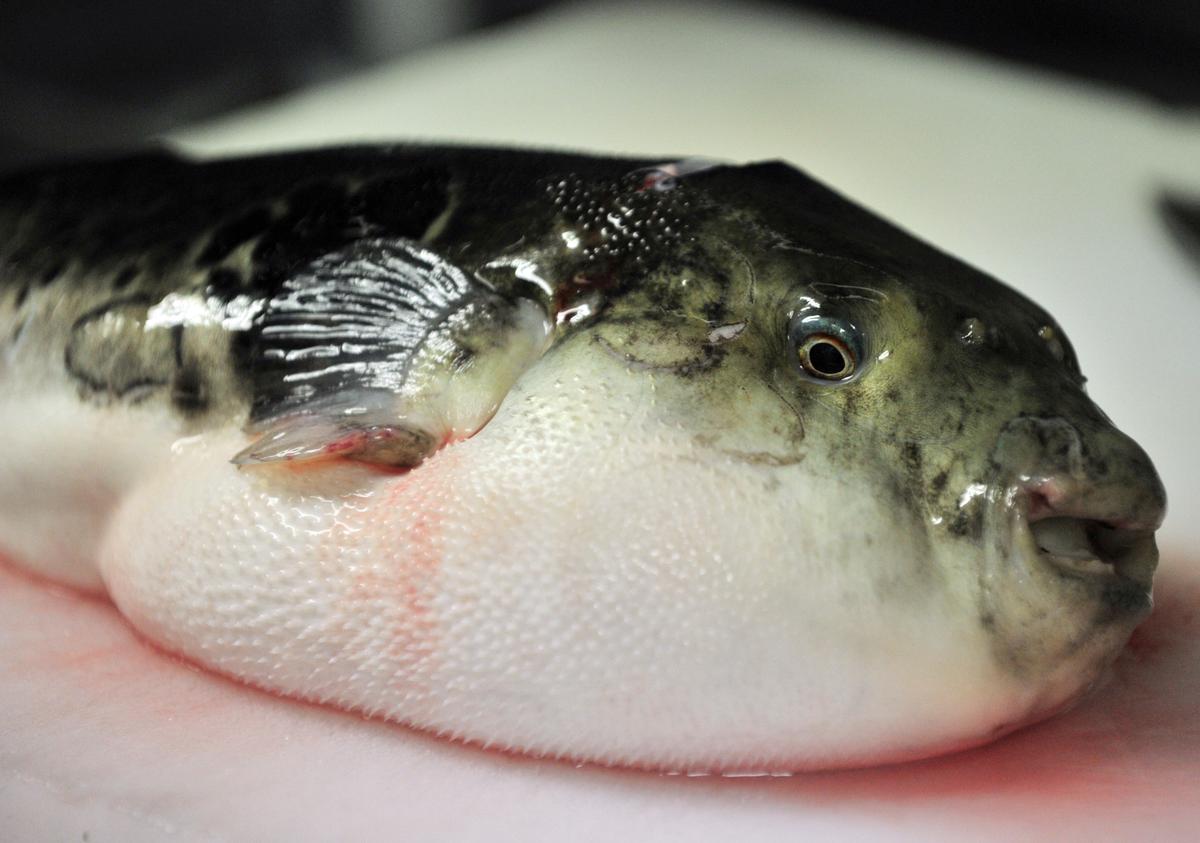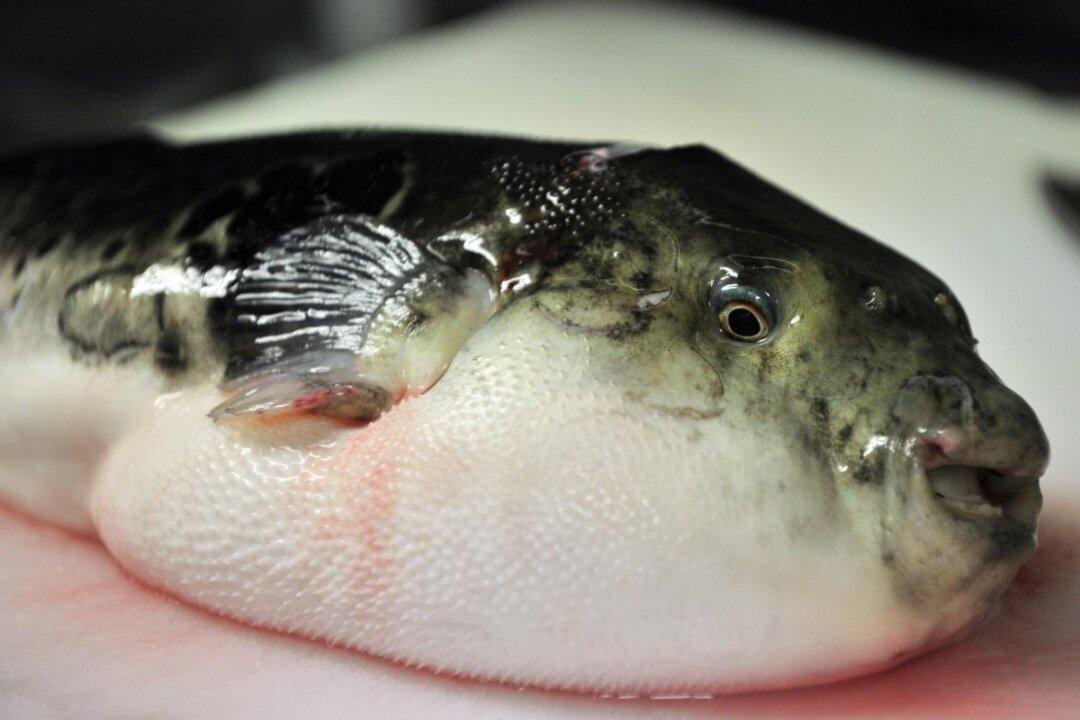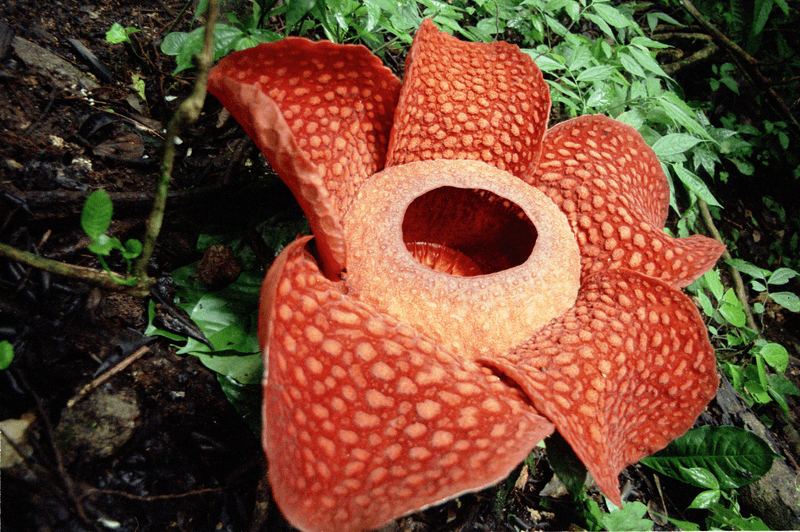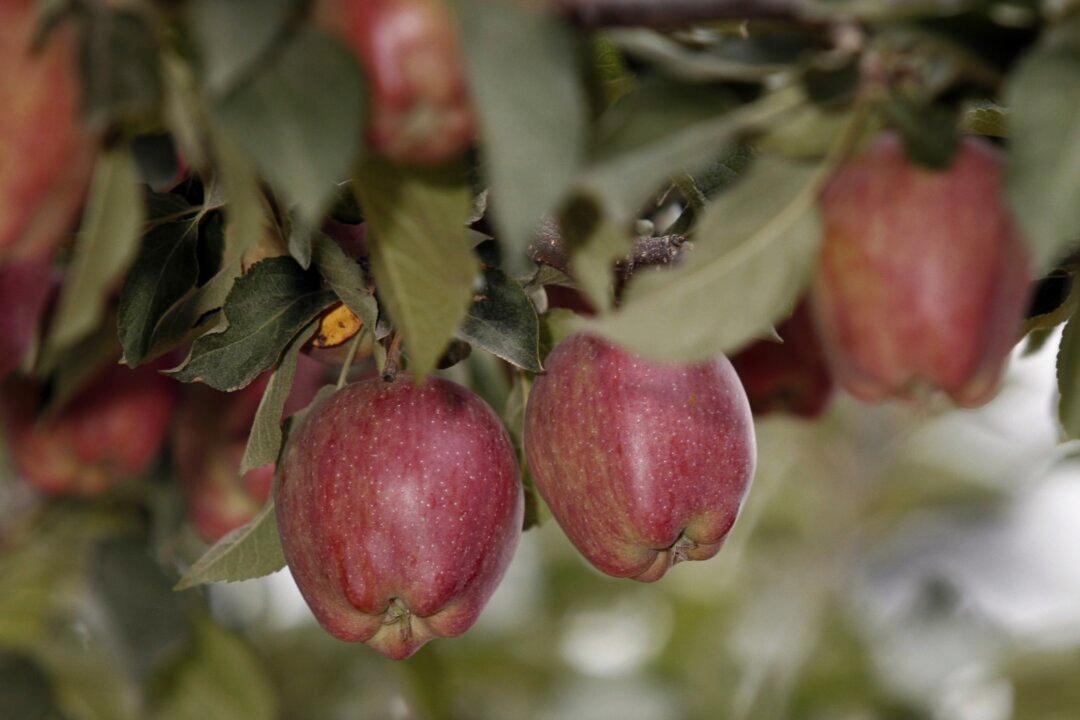The last thing you should think about while eating is that your dinner could kill you. Yet there are some foods out there with the potential to kill that people still knowingly seek out. Some crave the taste, others the thrill. Many of these foods are even considered delicacies in certain regions of the world.
1. Fugu

A puffer fish, also known as fugu in Japan, on a chopping board. Every year in Japan people end up in the hospital after eating puffer fish, sometimes leading to death. Yoshikazu Tsuno/AFP/GettyImages





